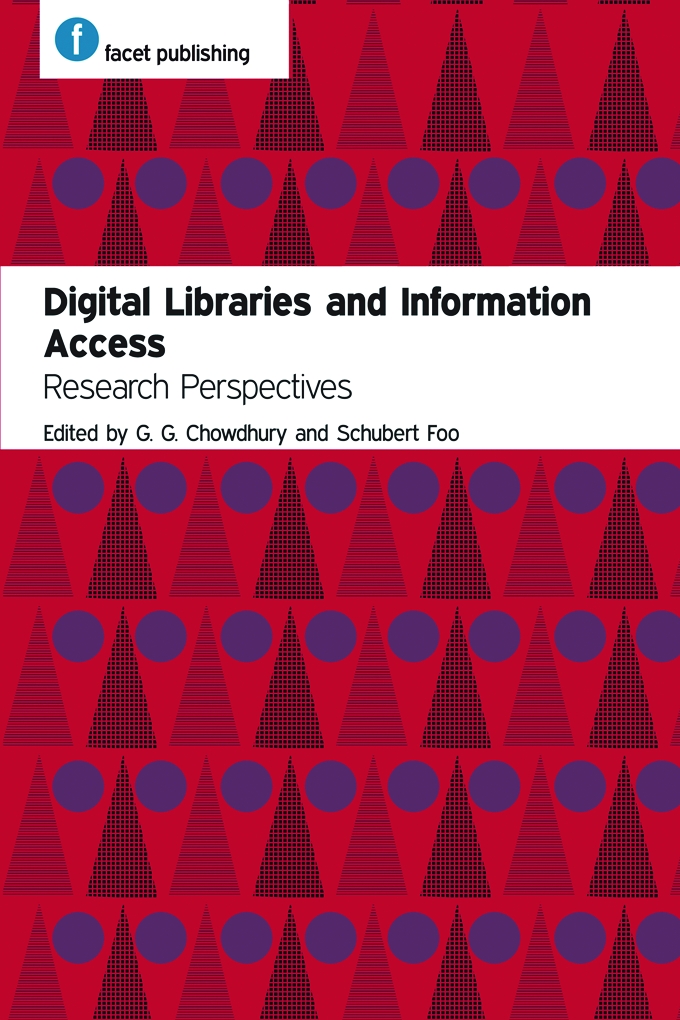Book contents
- Frontmatter
- Contents
- Foreword
- Editors and contributors
- 1 Digital libraries and information access: introduction
- 2 The design and architecture of digital libraries
- 3 Metadata and crowdsourced data for access and interaction in digital library user interfaces
- 4 Information access
- 5 Collaborative search and retrieval in digital libraries
- 6 The social element of digital libraries
- 7 Towards socially inclusive digital libraries
- 8 Users’ interactions with digital libraries
- 9 Digital libraries and scholarly information: technology, market, users and usage
- 10 Digital libraries and open access
- 11 iSTEM: integrating subject categories from multiple repositories
- 12 The usability of digital libraries
- 13 Intellectual property and digital libraries
- 14 Digital preservation: interoperability ad modum
- 15 Digital libraries and information access: research trends
- Index
- Miscellaneous Endmatter
14 - Digital preservation: interoperability ad modum
Published online by Cambridge University Press: 08 June 2018
- Frontmatter
- Contents
- Foreword
- Editors and contributors
- 1 Digital libraries and information access: introduction
- 2 The design and architecture of digital libraries
- 3 Metadata and crowdsourced data for access and interaction in digital library user interfaces
- 4 Information access
- 5 Collaborative search and retrieval in digital libraries
- 6 The social element of digital libraries
- 7 Towards socially inclusive digital libraries
- 8 Users’ interactions with digital libraries
- 9 Digital libraries and scholarly information: technology, market, users and usage
- 10 Digital libraries and open access
- 11 iSTEM: integrating subject categories from multiple repositories
- 12 The usability of digital libraries
- 13 Intellectual property and digital libraries
- 14 Digital preservation: interoperability ad modum
- 15 Digital libraries and information access: research trends
- Index
- Miscellaneous Endmatter
Summary
Introduction
Digital preservation (DP) is defined as the set of activities which assure ‘interoperability with the future’ (Rusbridge at al., 2005, 1). It is a key aspect of digital libraries because, without it, future users will not be able to access the wide range of digital resources created and collected today. Not only does DP address the future, it is also a prerequisite for us today to access digital resources created in the past. From this point of view it would be more correct to define it as ‘interoperability over time’.
But then one could ask, what makes digital preservation different from technical interoperability? Why should this be a separate domain in its own right? What is so special about the time dimension of interoperability that addressing it needs to be tackled as a separate research and development domain?
Being defined as ‘the capability to communicate, execute programs, or transfer data among various functional units in a manner that requires the user to have little or no knowledge of the unique characteristics of those units’ (ISO/IEC 1993), interoperability is a major concern within the digital library domain in a technological environment where multiple hardware and software systems and standards co-exist, and where the number of metadata schemas available is measured not in dozens, but in hundreds. Gradmann (2008) suggests that it is a multidimensional concept that can be expressed through six vectors (functionality, people, technologies, interoperational entities, information objects and multilinguality) and four abstraction levels (technical, syntactic, semantic and functional), thus forming an interoperability matrix. Where does DP fit into this matrix, or does it extend the matrix? This chapter is about digital preservation research and argues that what makes it a domain in its own right is that its primary focus is on applying interoperability ad modum, or in other words, advancing towards solutions that guarantee that digital objects will be rendered and used at any future point in time in ways that do not differ from their original intended uses. We believe that in the future digital preservation information systems will be a natural part of the ‘fabric’ of digital objects’ entire lifecycle and not necessarily a separate activity, usually undertaken towards the end of that lifecycle.
- Type
- Chapter
- Information
- Digital Libraries and Information AccessResearch perspectives, pp. 193 - 216Publisher: FacetPrint publication year: 2012
- 2
- Cited by



